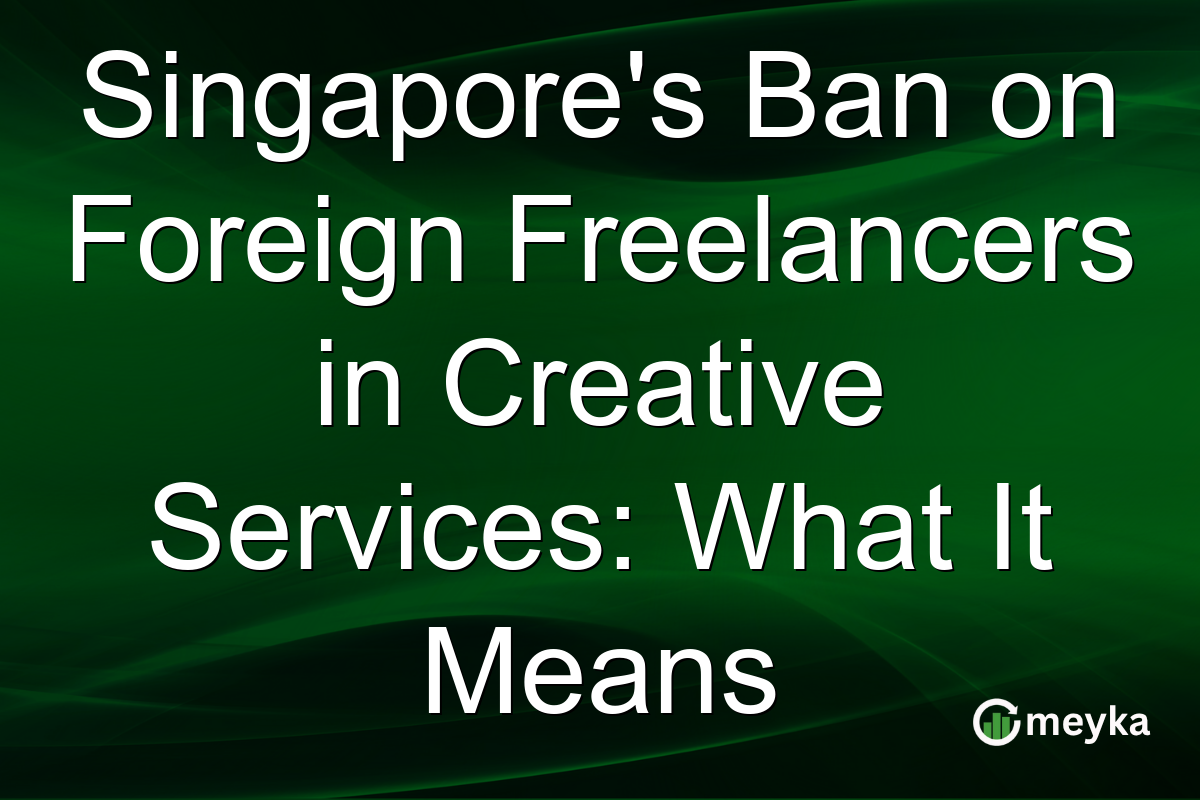Singapore’s Ban on Foreign Freelancers in Creative Services: What It Means
Singapore’s Ministry of Manpower (MOM) recently announced a ban on hiring foreign freelancers for creative services. This decision has sparked conversations about its impact on the industry and the strategic reasoning behind it. Below, we explore the implications of this policy in depth while considering the nuances of the Employment of Foreign Manpower Act. The focus keyword “Singapore MOM foreign freelanc” will guide our discussion as we delve into this evolving landscape. Our aim is to offer clarity on a move that affects many stakeholders in the global creative sector.
Understanding the Ban
The recent decision by Singapore’s MOM to prohibit companies from engaging foreign freelancers for creative services has significant implications. This move is grounded in the Employment of Foreign Manpower Act, which aims to regulate the employment of foreign workers in Singapore. The MOM’s rationale for this policy is to protect local employment opportunities while ensuring that companies comply with the country’s employment regulations. According to a report from The Star, the ban specifically focuses on the creative industry, which has seen a significant influx of foreign freelancers. The government believes that by restricting foreign employment, local creatives can benefit from increased job opportunities and career development. This policy change comes at a time when the local creative industry is evolving rapidly, with growing demand for digital and creative content. By enforcing this ban, the MOM aims to nurture local talent and ensure that Singapore remains a hub for creative innovation.
Impact on the Creative Industry
The prohibition of foreign freelancers has stirred varied reactions within the creative sector. On one hand, local creatives may find more opportunities arising from this decision. A greater demand for local talent may lead to an increase in job openings and potential growth for Singaporean creatives. Conversely, businesses have expressed concerns about the limitations this policy introduces. According to Mothership, companies argue that foreign freelancers often bring unique perspectives and skills that enhance creativity and innovation. Without access to these freelancers, businesses fear they may struggle to meet the dynamic demands of the market. Furthermore, the ban may affect the flexibility that companies previously enjoyed. Many businesses relied on foreign talent for short-term projects, benefiting from a diverse pool of skills and cultural insights. The restriction could therefore lead to a talent gap that may be challenging to fill quickly.
Regulatory Compliance and Challenges
Beyond industry-specific impacts, the enforcement of this ban involves legal intricacies connected to the Employment of Foreign Manpower Act. Companies must now navigate these regulations more carefully to avoid penalties. Employer compliance is crucial. Failing to adhere to this new directive may result in fines or further restrictions. The MOM has emphasized that companies must fully understand and follow the rules to remain in good standing. There is also a broader economic concern about how this regulation might influence Singapore’s appeal as a business hub. The city-state is known for its openness to global talent, and the move could be perceived as a shift towards protectionism. Ensuring balanced growth while keeping Singapore’s economy diverse and competitive is a complex task that necessitates careful consideration.
Future Outlook for the Creative Sector
Looking ahead, the creative industry faces a transformative period. Companies may need to invest in local talent development and enhance recruitment strategies to counter the effects of the ban. The policy is likely to prompt educational institutions to focus more on creative skills that align with industry needs. By cultivating a skilled workforce, Singapore can maintain its innovative edge while adapting to new regulations. The government may also explore additional measures to support the industry. Initiatives such as training grants or incentives for hiring local talent could aid the transition and ensure a thriving creative economy. This approach aligns with Singapore’s broader economic strategy to boost productivity and foster local talent while remaining a key player on the international stage.
Final Thoughts
Singapore’s ban on foreign freelancers in the creative sector marks a pivotal moment for businesses and local talent. While the move aims to protect and enhance local employment, the transition requires careful management. Companies and the government must collaboratively explore strategies that nurture local skill development while ensuring the creative industry continues to thrive. Platforms like Meyka can offer real-time insights and predictive analytics, helping businesses navigate these changes effectively. You can explore Meyka’s financial tools for more in-depth market analysis and to,
FAQs
The ban aims to protect local employment opportunities and ensure compliance with the Employment of Foreign Manpower Act, fostering more jobs for Singaporean creatives.
Companies may face challenges in accessing diverse talent and adapting to market demands. It might require increased focus on developing local skills and talent recruitment.
Local creatives may experience increased job opportunities and career growth due to higher demand for domestic talent in the industry after the ban is enforced.
Disclaimer:
This is for information only, not financial advice. Always do your research.






